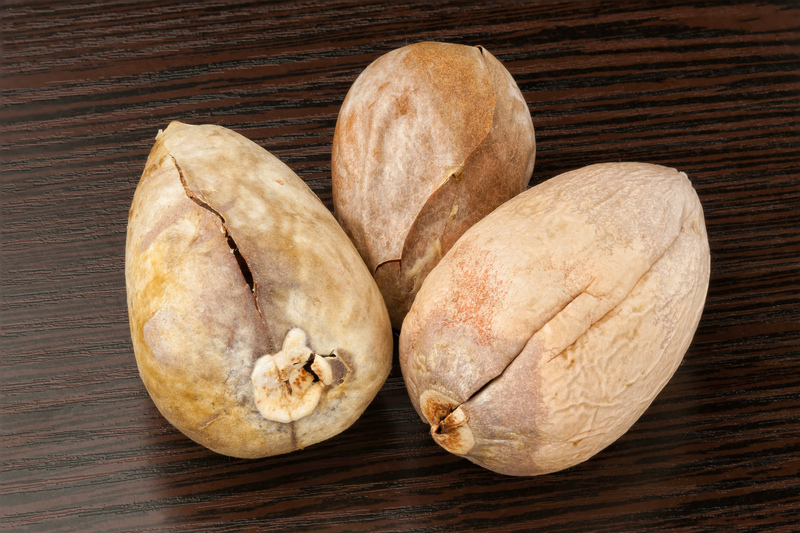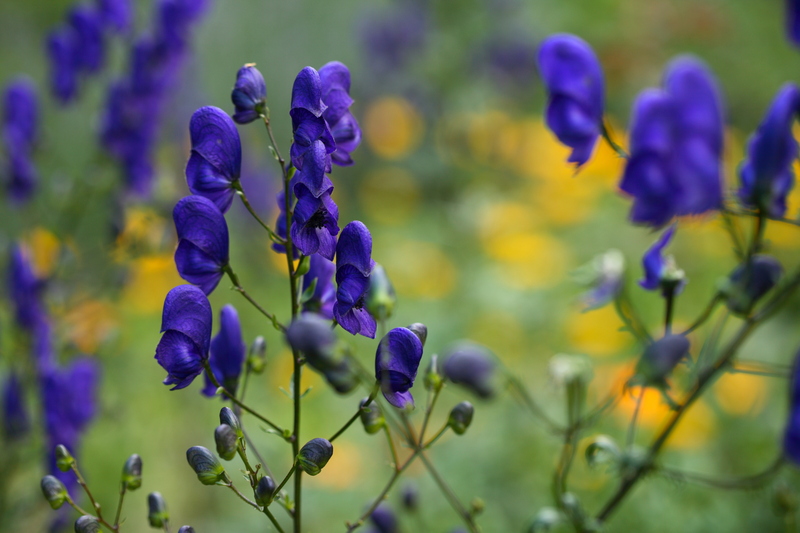Maximizing Garden Beauty Despite Blustery Conditions
Posted on 19/08/2025
Maximizing Garden Beauty Despite Blustery Conditions
Creating a stunning and resilient garden in windy climates can feel like a challenging task. Blustery conditions may threaten delicate plants, erode soil, and disrupt your landscape design. However, with the right strategies, you can maximize your garden's beauty and ensure a thriving, wind-resistant outdoor sanctuary.

Understanding the Challenges of Windy Gardens
Gardening in regions exposed to frequent high winds can have a significant impact on plant health, soil stability, and overall garden aesthetics. Winds can:
- Cause physical damage by snapping branches, shredding foliage, or uprooting plants.
- Increase plant transpiration, leading to water loss and dehydration.
- Enhance soil erosion, washing away nutrients vital for growth.
- Dry out soil and mulch, reducing moisture available for plants.
- Transport salty air in coastal areas, which can scorch delicate species.
Despite these obstacles, it is absolutely possible to cultivate a beautiful and robust garden in even the windiest areas. Here's how you can achieve lasting garden beauty, maximizing your landscape's potential while withstanding the elements.
Assessing Your Garden's Wind Exposure
Before implementing solutions to maximize your garden's beauty despite blustery weather, it is crucial to evaluate your garden's specific exposure:
- Observe wind directions throughout the year--are there prevailing winds from the same direction?
- Evaluate microclimates created by buildings, fences, and trees.
- Note problem areas where gusts are most intense.
Documenting the wind's patterns will inform your wind-resistant planting strategy for the most effective garden design.
Design Solutions for Windy Gardens
1. Create Effective Windbreaks
Windbreaks are essential for sheltering your garden and reducing wind speed. Natural windbreaks are usually preferable to solid barriers because they slow and filter wind rather than creating eddies and turbulence.
- Hedges--Dense, multi-layered plantings of shrubs and small trees, such as hawthorn, holly, or viburnum, can block and dissipate wind energy.
- Living fences--Rows of evergreen trees (e.g., pine, spruce, or cypress) provide year-round protection.
- Lattice or trellises--Perforated structures planted with climbing plants like clematis or ivy break gusts without trapping wind.
Pro-tip: Place windbreaks at right angles to prevailing wind and ensure they are at least as tall as the area to be protected.
2. Design Thoughtful Shelterbelts
Shelterbelts are wider protective plantings, often composed of several rows of trees, shrubs, and perennials. They create a staged barrier, allowing the wind to slow gradually, protecting the garden interior.
- Combine tall trees at the back (windward side), smaller trees or large shrubs in the middle, and bushy lower shrubs at the front (leeward side).
- Use native plant species that are naturally adapted to local wind exposure.
Properly planted shelterbelts can reduce wind speeds by up to 50%, creating a tranquil microclimate for your garden to maximize beauty in all seasons.
3. Incorporate Wind-Resistant Garden Structures
Strategic placement of structures can greatly enhance your garden's resistance to wind:
- Arbors and pergolas provide shaded areas and break up wind flow while encouraging climbing plants that act as natural buffers.
- Freestanding walls or gabions (rock-filled cages) can be both decorative and functional, diffusing wind effectively when not built as solid barriers.
- Garden screens made of woven willow, reed, or bamboo allow wind to pass through while protecting delicate garden areas.
These features double as stunning focal points, adding architectural beauty and maximizing garden usability regardless of windy weather.
Choosing Wind-Resistant Plants for Lasting Beauty
Plant selection may be the single most important step in maximizing your garden's beauty in blustery conditions. Seek out species that are:
- Flexible rather than brittle
- Grow low to the ground or are naturally compact
- Have waxy or leathery leaves to minimize water loss
- Possess strong root systems to anchor them
Ideal Wind-Resistant Plant Varieties
- Grasses and sedges: Ornamental grasses like Miscanthus, Stipa, and Panicum sway gracefully in wind, providing beautiful texture.
- Salt-tolerant options for coastal gardens: Tamarisk, Sea Buckthorn, and Escallonia.
- Tough shrubs: Elaeagnus, Hebe, and Boxwood keep their shape and offer year-round color.
- Perennials: Lavender, Echinops, and Rudbeckia manage wind with resilience and vibrant blooms.
- Strong-rooted trees: Scots Pine, Black Locust, and Japanese Maple can withstand strong winds when well-established.
Selecting the right plants ensures your garden remains lush and inviting in any weather.
Smart Planting Techniques for Windy Gardens
Proper Spacing
Space your plants closer together than usual. This allows them to support each other physically and creates a denser core less prone to wind damage. Grouping species with similar wind resistance further increases stability.
Planting in Protected Microclimates
Utilize areas naturally sheltered by buildings, fences, or existing foliage. Position sensitive plants in these locations to maximize their survival and growth.
Mulching for Stability
A deep layer of mulch (at least 2-3 inches) around plant bases helps:
- Reduce soil erosion
- Retain vital moisture
- Protect roots from exposure due to wind-blown soil
Staking and Support
For newly planted or top-heavy species, use stakes, guy ropes, or support cages to help them establish sturdy root systems. Use flexible ties that allow movement, encouraging stronger, more wind-resistant growth.
Irrigation and Watering Tips for Windy Environments
Wind rapidly increases evaporation and can lead to chronic dryness in your garden. Maintaining adequate moisture levels is key to preserving your garden's beauty despite the elements.
- Water deeply and less frequently to encourage deep-root growth.
- Use soaker hoses or drip irrigation to minimize water loss to evaporation.
- Water early in the morning when wind and temperatures are typically lower.
- Apply a thick mulch layer to lock in precious moisture and slow down surface drying.
Tip: Consider windbreaks to help retain humid microclimates where thirsty plants are situated.
Maintenance and Care for a Thriving Wind-Proof Garden
Pruning Strategies
Regular, strategic pruning can reduce wind resistance in shrubs and trees. Cut back dead or brittle branches, and thin out dense canopies to allow wind to pass through without causing breakage. Shape hedges with a broad base and tapering top for best performance in strong winds.
Soil Care and Erosion Prevention
- Add organic matter frequently to strengthen soil structure.
- Plant ground covers or spreading perennials to shield bare soil.
- Consider low stone walls, logs, or terraces on slopes to hold soil in place.
Repairing Wind Damage
Even the best-prepared gardens may experience damage after severe storms. Remove broken plant material promptly to prevent disease, and stake or replant those that have toppled. Avoid fertilizing heavily right after wind damage, give plants time to recover.
Enhancing Beauty Through Creative Design
Focal Points and Hardscapes
Introduce visual interest that transcends weather limitations with beautiful hardscape elements like:
- Colorful glazed pots and containers--safely anchored to prevent tipping
- Stone pathways and mosaic patios that withstand the elements
- Sculptures or garden art designed to move or chime gracefully with the wind
These features offer year-round attractiveness, anchoring your garden design and maximizing its appeal even if strong winds persist.
Plant Movement as a Garden Feature
Some of the most enchanting gardens use wind as an ally, selecting ornamental grasses and fluttering flowers that dance in the breeze, creating dynamic, ever-changing displays. Embrace the kinetic beauty of wind-moved foliage to bring your garden to life.
Seasonal Adjustments for Continuously Beautiful, Wind-Resistant Gardens
Adapt your maintenance and planting schedule to anticipate seasonal wind patterns:
- Spring: Focus on sowing wind-tolerant annuals that will fill gaps, and prune back winter damage.
- Summer: Monitor soil moisture closely and refresh mulch where necessary.
- Autumn: Plant new trees and shrubs so they can establish roots before the next windy season.
- Winter: Inspect supports and windbreaks; wrap vulnerable plants as needed.
These simple adjustments help you maximize the beauty of your garden throughout the year, no matter how blustery the conditions become.

Embracing Sustainability in Wind-Exposed Gardens
Sustainable practices are especially important in gardens where the wind's intensity puts extra strain on flora and soil:
- Choose native plants that support wildlife and withstand local weather extremes.
- Minimize tilling and heavy machinery--these can loosen soil and worsen erosion in wind-exposed gardens.
- Harvest rainwater to maintain consistent irrigation without overtaxing resources.
- Compost garden waste to create a steady supply of mulch and organic matter for resilience.
Integrated pest management strategies also reduce the impact of pests, which may flourish when plants are stressed by wind.
Maximizing Garden Beauty in Blustery Conditions: Conclusion
While windy conditions can pose complex challenges for gardeners, they also offer unique opportunities for creative, resilient designs. By thoughtfully combining effective windbreaks, robust plant selection, sustainable soil management, and eye-catching features, you can maximize your garden's beauty despite blustery conditions.
With preparation, adaptability, and a little ingenuity, your garden will not only withstand the harshest gales--but flourish in their wake, remaining a vivid, tranquil haven for years to come.
Key Takeaways for Wind-Resistant Garden Beauty:
- Assess wind exposure and identify both problem areas and protected zones.
- Incorporate natural windbreaks and staged shelterbelts for effective protection.
- Choose and position wind-resistant plants for lasting appeal and low maintenance.
- Maintain healthy soil, proper irrigation, and supportive structures to minimize wind impact.
- Embrace creative garden design and let movement, texture, and dynamic focal points shine.
Follow these steps and you'll enjoy a garden that thrives and dazzles--regardless of how blustery your climate may be!

